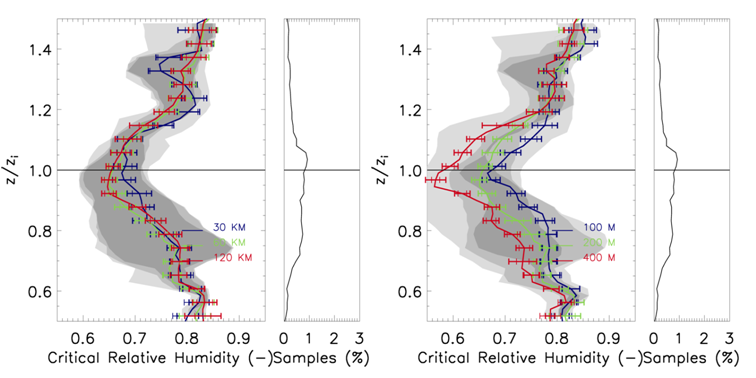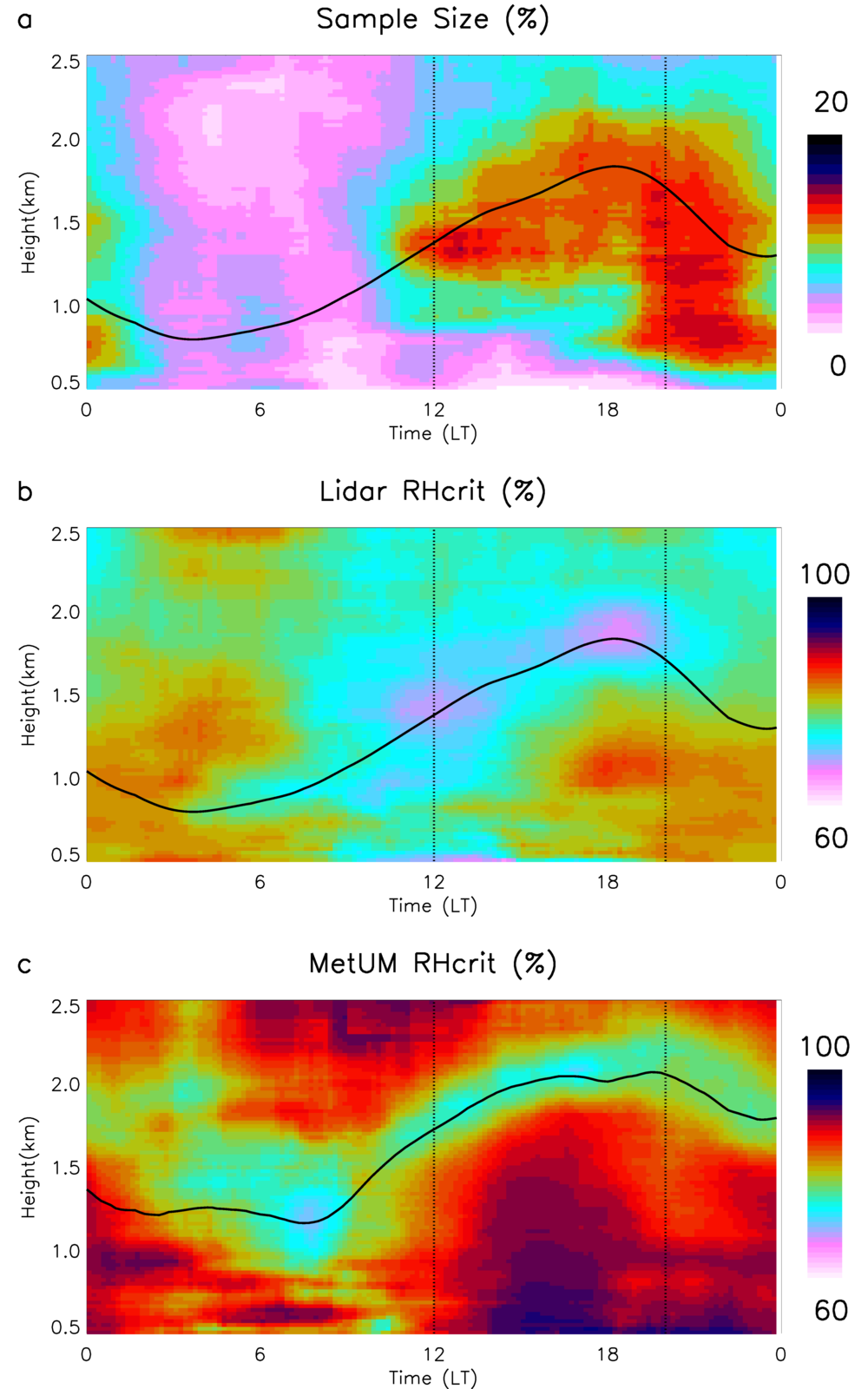Towards retrieving critical relative humidity from ground-based remote-sensing observations
Submitter:
Van Weverberg, Kwinten — Met Office
Area of research:
General Circulation and Single Column Models/Parameterizations
Journal Reference:
Science
In a Global Circulation Model (GCM), cloud should form before the grid-box-mean state becomes saturated. Therefore, assumptions about sub-grid variability in temperature and water vapour are necessary, which are typically combined in the critical relative humidity (RHcrit), the relative humidity at which cloud forms a sub-saturated GCM grid box.
Impact
For the first time, the critical relative humidity has been 'observed' using high-resolution temperature and water vapour measurements from the Raman Lidar at the Southern Great Plains Central Facility, for a variety of assumed GCM grid box sizes.
Summary
We present an exploratory study aimed at understanding whether current noise levels of lidar-retrieved temperature and water vapour are sufficiently low to obtain a reasonable estimate of RHcrit. We show that vertical profiles of RHcrit can be derived with an uncertainty of a few percent. RHcrit tends to be smallest near the boundary-layer top and seems to be insensitive to the horizontal grid spacing at the scales investigated here (30-120 km). However, larger sensitivity was found to the vertical grid spacing. RHcrit is observed to decrease by 10% as the vertical grid spacing quadruples.
By way of example, the lidar-retrieved RHcrit profiles were used to evaluate a parameterization that estimates RHcrit from variances diagnosed from the boundary-layer parameterization. It is shown that this parameterization overestimates RHcrit by up to 10 %, but captures the diurnal variability of RHcrit well, with lower values of RHcrit near the boundary-layer top.
While we show that the uncertainties associated with the retrievals are large, lidar observations seem promising to diagnose and evaluate a very important parameter to predict cloud fraction in climate and numerical weather prediction models.



